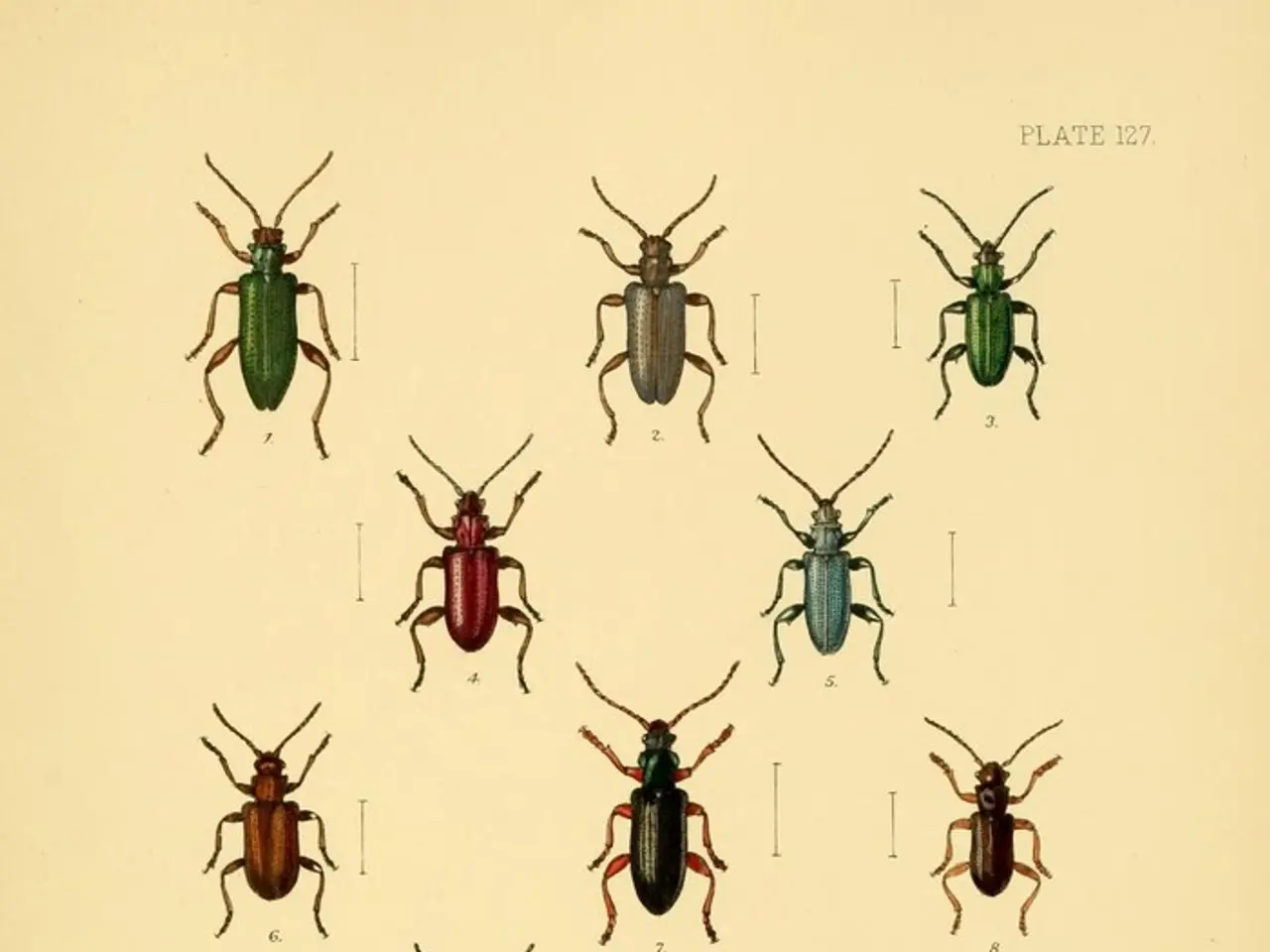Strategies for Eliminating Cucumber Beetles
Cucumber beetles are small, winged insects that pose a significant threat to cucurbit plants such as cucumbers, squash, pumpkins, and melons. These pests can cause visible damage to leaves, flowers, and fruit, and their larvae can feed on the roots, potentially causing less visible harm.
To identify cucumber beetles, look out for small winged beetles about 1/4 inch long. They come in two types: Striped cucumber beetles, yellowish-orange with three distinct black stripes on their backs, and Spotted cucumber beetles, greenish-yellow with twelve black spots on their backs.
Controlling Cucumber Beetles in Your Garden
Effective methods for controlling cucumber beetles include:
- Planting Timing: Delay planting cucurbits until mid-June to avoid peak beetle emergence in late May to early June.
- Hand-Picking Beetles: Regularly inspect young plants (up to the 3rd set of leaves) and remove beetles by squashing or dropping them into soapy water.
- Garden Hygiene: Use mulch around plants to deter egg-laying beetles, pull out weeds that may host pests, and remove infected or dead plants immediately to prevent disease spread.
- Floating Row Covers: Use these during early growth stages to physically block beetles, removing covers when plants flower to allow pollination.
- Attract Beneficial Insects: Encourage natural cucumber beetle predators like soldier beetles, tachinid flies, parasitic nematodes, and braconid wasps by maintaining diverse plantings.
- Plant Repellent Plants: Incorporate plants such as broccoli, calendula, nasturtiums, radish, rue, and tansy to reduce beetle attraction.
- Organic Pesticides: Apply insecticidal soap as a safe organic control if infestations get severe.
Dealing with Bacterial Wilt
Cucumber beetles can transmit bacterial wilt, a serious disease causing plant wilting and discoloration. Infected plants should be removed immediately to prevent spread, as there is no cure for this disease. To confirm bacterial wilt, cut a symptomatic stem in half and hold the two ends together for about 10 seconds, then slowly pull them apart. A whitish, mucus-like string indicates bacterial wilt.
Using Trap Crops
Trap crops like blue Hubbard squash, buttercup squash, or zucchini can attract cucumber beetles away from main cucurbit crops. When using trap crops, spray them with organic pesticides or dispose of them by stuffing into garbage bags or burning.
Important Considerations
- Once cucurbit plants begin flowering, the row cover should be removed to allow pollinators access to the blossoms.
- Later in the summer, the adults of this new generation feed on foliage and flowers, and if the population is high enough, stems and fruit as well.
- Cucumbers and muskmelons are the most affected of the cucurbits by bacterial wilt.
- Cucumber beetles can be found on cucurbit plants, including cucumbers, melons, and squash.
- University of Minnesota and West Virginia University suggest several methods to control cucumber beetles, including planting later.
Cucumber beetles can make growing cucumbers a challenging task, but a healthy crop can still be achieved with proper precautions. By following these identification and control strategies, you can successfully manage cucumber beetles and protect your cucurbit crops.
- To protect the garden from cucumber beetles, consider delaying the planting of cucurbits until mid-June to avoid peak beetle emergence.
- Hand-picking beetles from young plants (up to the third set of leaves) and removing them either by squashing or dropping them into soapy water can help control their population.
- Maintaining garden hygiene by using mulch around plants, removing weeds and infected or dead plants, and keeping the area free of debris can deter egg-laying beetles.
- To prevent beetle attraction, incorporate plants such as broccoli, calendula, nasturtiums, radish, rue, and tansy in the home-and-garden lifestyle or gardening plan.
- Encourage beneficial insects like soldier beetles, tachinid flies, parasitic nematodes, and braconid wasps in the garden by maintaining a diverse planting for a vibrant organic lifestyle.
- If infestations become severe, application of insecticidal soap can serve as a safe organic pesticide to control cucumber beetles.







